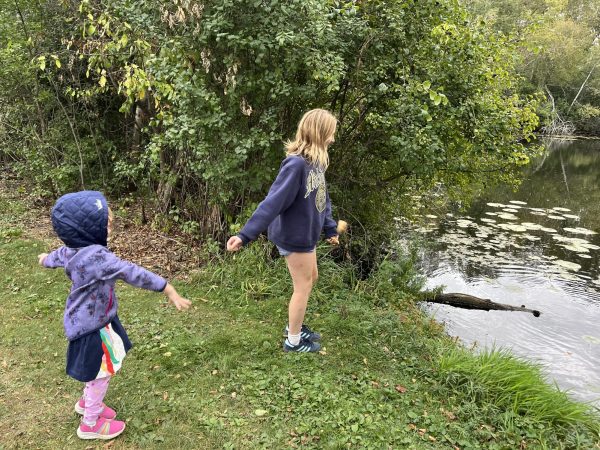Happy New Year! Or rather “Shana Tova” which means “a good year” in Hebrew, is used to wish people celebrating the Jewish New Year, Rosh Hashanah a good fortune.
Rosh Hashanah is a two-day observance that begins on the first day of Tishrei, the seventh month of the Jewish lunar calendar.
For many, Rosh Hashanah is a chance to gain a fresh start to a new year. Sophomore Evie Gardner said, “You’re supposed to focus on yourself, especially during Rosh Hashanah, to set yourself up for success, [and be] a better person this year than you were last year.” Similar to the resolutions people make on New Year’s Day. It marks the anniversary of God’s creations, Adam and Eve. “For those who don’t celebrate it as religiously, it’s really just like a good time to get together with family and friends.” Sophomore Naomi Glozman said.
One way Jewish people celebrate Rosh Hashanah is by sharing a big meal. Sophomore Avi Coleman said, “The food is just something that’s really constant throughout Jewish culture. A common snack [of Rosh Hashanah] is apples and honey, and it’s kind of a metaphor. The honey is supposed to be sweet and is telling you to have a sweet year.” Another tradition central to this holiday is Tashlich. Coleman said, “Jewish people will go to rivers or bodies of water, because water is very meaningful, and they throw bread into the water [which symbolizes] throwing away your sins. And that’s something I’m doing later today with my family. We’re going to a river, and we’re throwing bread which is called Tashlich.”

Celebrating with family and friends is a highlight. “I have these family friends that go back two generations. So my grandparents were friends with these other grandparents. They all had kids, and now we’re all still friends. Usually we all get together, at either Rosh Hashanah or usually for Passover. So we’re able to see each other a couple times a year at least,” Gardner said. Also, some foods make their way into every family gathering. Glozman said, “We had matzo ball soup. That’s more of a Passover thing, but it’s really something that we eat for all holidays. I ate two round challahs too. Those were really good. They sell them at Breadsmith which is amazing because it’s local. We didn’t really have time this year but sometimes we’ll bake a round challah.” Rosh Hashanah is the only time of year where Jewish people eat a round challah, instead of a braided one, because the round challah represents the idea that the year is coming full circle.
Many families will attend services at their synagogues as well. “So we usually go to services so that we can prepare for Yom Kippur, but because we don’t have a day off of school, I’m probably gonna end up going in the evening instead,” Glozman said. Rosh Hashanah is the first of the Jewish High Holy Days, and Jewish people use the ten days from Rosh Hashanah to Yom Kippur to do good deeds. “On Yom Kippur, a lot of Jews will fast. They won’t eat anything for the entire 24 hours,” Coleman said, “I do confirmation, which is a class with the rabbi and other sophomores at my temple, and I was learning that [you have to] cleanse your sins, [in the days between Rosh Hashanah and Yom Kippur], so you are completely sin-free on Yom Kippur.”
This year, Glozman, Gardner and Coleman are the leaders of Mishpacha, the Jewish student affinity group. They used many different ways to bring attention to Rosh Hashanah this week. “I put up a poster that I designed on Canva, and also an Instagram post, because we recently made an Instagram account,” Glozman said. “We also made apples and honey for the German exchange students,” Coleman said.

The homework load was hard to balance with the Rosh Hashanah festivities that occurred in the evening. “It’s not a big deal but it’s just a little stressful, because I’ve been doing [dinners and services] every night, and also I’m trying to do my homework and sports on top of that,” Glozman said.
“We are hoping that teachers are more mindful of the Yom Kippur homework load, because that actually needs to be [homework-free] since it’s the holiest holiday,” Coleman said.
Moving towards Yom Kippur, be respectful of people fasting, and to those who celebrate Rosh Hashanah, Shana Tova!